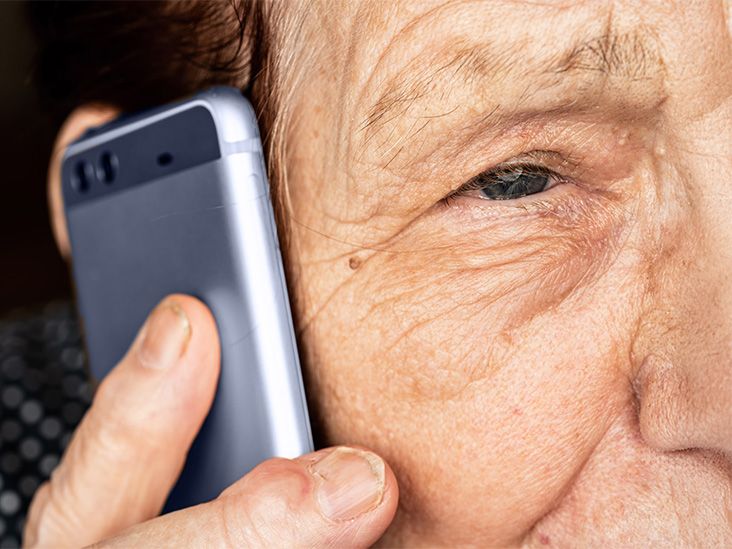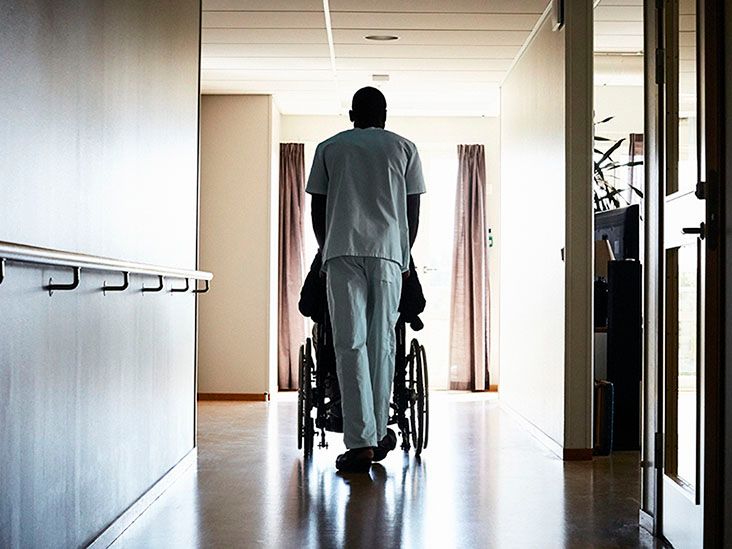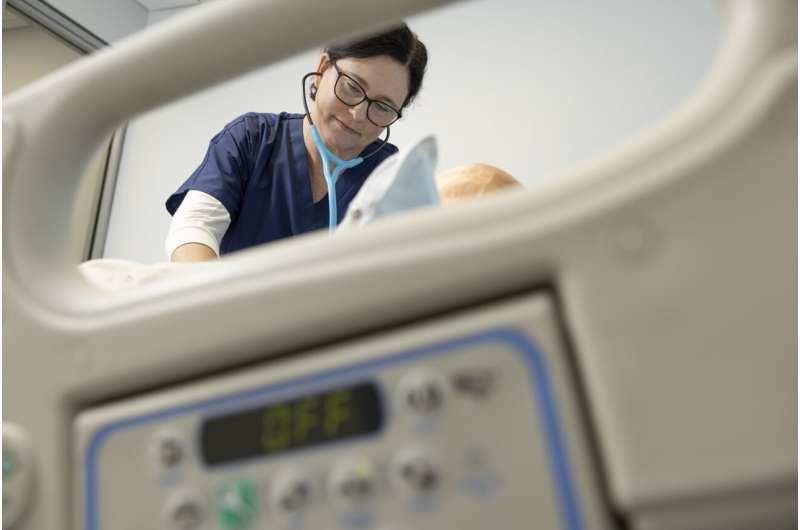Yeah hospital trips for someone living in a nursing home? They happen all the time. But here's the real deal: a lot of them didn't need to happen at all.
Up to 4045% of hospital transfers from nursing homesespecially for people who are severely ill, have advanced dementia, or are nearing the end of lifeare considered potentially avoidable. That's nearly half. And when you see it up close? It hits differently.
I remember visiting a friend's mom in her nursing home. She was peaceful, sleeping in her favorite chair, her routine humming along just fine. Then one night, she spiked a fever. By sunrise, there was an ambulance. Three days later, she came back quieter, confused, needing help to walk again. The diagnosis? A mild urinary tract infection.
We all wondered: Could this have been handled in her room?
Turns outyes. And stories like this? They're not rare. They're routine. And for the frailest among us, rushing to the ER often does more harm than good.
What Counts
So what makes a hospital trip from a nursing home "avoidable"? It's not about blaming anyone. It's about understanding when the system could've done better.
Experts call it a "potentially avoidable hospitalization" when:
- The condition could've been treated right there in the facility with the right tools and staff.
- There was a delay in noticing changeslike a temperature shift, appetite drop, or confusion.
- The transfer went against the resident's known wishes, like a do-not-hospitalize (DNH) order or comfort-focused care plan.
- A doctor or nurse practitioner could've assessed and treated the issue on-site, but wasn't available.
It's not just clinical. It's about timing, communication, and accessespecially for those with complex needs or serious cognitive decline.
And it's not just speculation. A 2024 study cited in PMC found that common conditions like UTIs, dehydration, and mild pneumonia often trigger unnecessary ER visitsbecause someone didn't have the training or tools to act earlier.
Why It Happens
Let's be real: nursing homes are stretched thin. But knowing the root causes helps us push for change.
Some of the most common triggers for avoidable hospitalizations include:
- UTIs misread as sepsisespecially in people with dementia who can't communicate symptoms.
- Dehydration that could've been caught with routine checks but wasn't.
- COPD or heart failure flares that need early treatment but instead go untreated until symptoms escalate.
- Uncontrolled pain or breathing issues in terminally ill residentsbecause comfort care isn't consistently applied.
- Confusion between staff, families, and doctors about what "emergent" really means.
It's like trying to fix a leaky faucet with a sledgehammer. The solution was simpler, but the moment passed.
| Condition | Why It's Often Avoidable |
|---|---|
| Urinary Tract Infection (UTI) | Can be diagnosed and treated on-site with proper protocols. |
| Dehydration / Fluid Imbalance | Preventable with routine monitoring; manageable with IV fluids in skilled facilities. |
| Congestive Heart Failure (CHF) | Stable cases can often be managed with medication adjustment. |
| COPD / Asthma Exacerbations | Early detection via pulse oximetry allows in-house treatment. |
| Skin Infections | Many respond to antibiotics without hospitalization. |
| Pneumonia | Mild cases may not require ICU care if caught early. |
The bottom line? A lot of these hospital trips could've been avoided. That's not just a statistic. It's someone's peace being disrupted for no real gain.
Who's Most at Risk
You'd think the sickest people would get the most careful attention. Unfortunately, it's often the opposite.
Residents with advanced dementia, limited mobility, or terminal conditions face the highest risk of avoidable transfers. Why?
- They can't always say "I'm in pain" or "I'm thirsty," so subtle signs get missed.
- They're more prone to deliriumespecially during transitions like ambulance rides.
- Being moved increases their risk of falls, infections, and never regaining their previous function.
And here's something deeply troubling: the risk isn't evenly distributed.
A 2024 PubMed study of over 2 million residents found stark racial disparities in avoidable hospitalizations:
- Black/African American residents: 48% higher risk
- Hispanic residents: 27% higher
- Asian residents: 24% higher
- American Indian/Alaska Native: nearly 50% higher
This isn't about health differences. It's about systemic gapsunderfunded facilities, fewer on-site clinicians, language barriers, and fewer advance care conversations in communities of color.
When care isn't equitable, safety isn't either.
The Hidden Cost
You'd think a hospital transfer means better care. But for someone fragile, it can feel like being tossed into a storm.
Hospitals are loud, bright, and fast-movingoverwhelming for anyone, let alone someone with dementia. Research shows hospitalizations can speed up cognitive decline. One JAMA Internal Medicine study found that even brief stays after infections led to faster mental deterioration in older adults.
And let's talk about dignity. We've all seen itrestraints, catheters, midnight blood draws. Not because they're needed, but because the system defaults to "do everything."
For families, it's gut-wrenching.
I spoke with Maria, whose mom had late-stage Alzheimer's and a comfort-focused care plan. One night, a nurse noticed a fever and called an ambulancewithout calling the on-call NP or using the facility's assessment tools.
Her mom spent 38 hours in the ER: restrained, scanned, given IVs, screaming in confusion. Diagnosed with a mild UTI. Sent back. Never regained her baseline cognition.
Maria still asks: "Why did this have to happen?"
She wasn't just hurt. She felt helpless. And she's not alone.
Families wrestle with guilt, uncertainty, and grief made messier by unnecessary hospital trips. Especially when the advance directives clearly said: "Do not rush to the ER."
What's Being Done
Here's the good news: we're learning. And some programs are making real progress.
In 2012, the Centers for Medicare & Medicaid Services launched the Nursing Home Initiative (NFI) to reduce avoidable hospitalizations. One early phase placed nurse practitioners and RNs directly inside nursing homes. They trained staff, reviewed medications, and responded to changesright on the floor.
The results? Fewer ER visits. Fewer hospital stays. Happier residents.
But then came Phase Two: financial incentives. Facilities could bill Medicare for treating certain conditions on-sitelike pneumonia, dehydration, or UTIswithout sending people to the hospital.
Seems smart, right?
But here's what the data said: Incentives alone didn't work.
A study published in PMC found that without on-site clinical support, payment incentives had no real impact. But when facilities had both funding and nurse practitioners on staff? That's when hospitalizations dropped.
The message is clear: You can't pay your way out of this problem. You need people on the ground.
| Program | Location | Key Strategy | Outcome |
|---|---|---|---|
| OPTIMISTIC | Indiana | On-site RNs and APNs manage acute changes | Reduced avoidable hospitalizations by 40% |
| RAVEN | Pennsylvania | Nurse practitioners + telehealth support | Improved symptom recognition and response time |
| NY-RAH | New York City | Train staff using INTERACT tools | Fewer unnecessary ER trips |
| ATOP | Nevada | "Pods" of clinicians assigned to multiple homes | Lower ED visit rates |
How to Help
You don't have to be a doctor or policy expert to make a difference. Here are real, doable things you can dowhether you're a family member, advocate, or just someone who cares.
Boost Clinical Support
The single most effective step? Having clinicians on-site. Nurse practitioners, PAs, or even dedicated on-call doctors make a world of difference.
If you're choosing a facility, ask: "Do you have NPs or a medical director who visits regularly?" A "no" should raise a red flag.
And if your loved one's facility lacks resources? Talk to the administrator. Advocate. Even small shiftslike partnering with a nearby hospital for telehealthcan prevent midnight ambulance rides.
Use Tools Like INTERACT
One of the best tools out there is called INTERACTshort for Interventions to Reduce Acute Care Transfers. It's free, evidence-based, and used in hundreds of homes to help staff:
- Spot early signs of illness (like changes in breathing or alertness).
- Assess the situation before escalating.
- Document properly and communicate clearly with doctors and families.
You can't make the staff use itbut you can ask if they do. And if they don't, share interreactions.org with them. It could save someone from an unnecessary hospital stay.
Talk Early About Care Goals
One of the most powerful things you can do? Start the conversationearlyabout what kind of care your loved one wants.
Ask:
- "Would Mom want to go to the ER for a mild infection?"
- "Is comfort more important than aggressive treatment?"
- "Has she said whether she'd want CPR or a breathing tube?"
Write it down. Make sure it's in the care plan. Review it regularly. Because when a crisis hits, everyone should know what "right care" means.
Ask the Right Questions
Choosing a nursing home? These questions go a long way:
| Question | Why It Matters |
|---|---|
| "Do you have nurse practitioners or doctors on-site regularly?" | Direct access reduces avoidable hospitalizations. |
| "Do staff use INTERACT or similar tools?" | Shows commitment to best practices. |
| "How do you treat infections or breathing issues?" | Reveals preparedness. |
| "Can you share your palliative care approach?" | Indicates focus on comfort. |
| "What's your rate of ER transfers?" | Red flag if high or unknown. |
Transparency tells you a lot. If they dodge the questions? That's telling, too.
Why It Matters
This isn't just about reducing hospital visits. It's about respect. Dignity. Quality of life.
Every avoidable hospitalization costs the healthcare system thousands. In 2005, over 314,000 avoidable admissions cost Medicare $2.6 billion. That money could've gone toward better staffing, more training, more time with residents.
But more than moneythis is about values.
For someone with a short time left, aggressive care isn't always "better" care. Sometimes, the most compassionate choice is to stay in your room, with familiar faces, where you're known and respected.
Palliative care isn't giving up. It's choosing to live wellright up to the end.
It Can Change
Let's be honest: avoidable nursing home hospitalizations are still too common. But here's what gives me hope: we know what works.
On-site clinicians. Smart tools like INTERACT. Care plans that honor what people want.
It's not flashy. It's not expensive. It's just human-centered.
If this were your parent, your grandparentwhat would you want?
You'd want them to be safe. Comfortable. Heard.
You'd want someone to pause before calling the ambulance and ask: "Is this really necessary?"
We can demand better. We can ask questions. We can push for dignity.
Because every avoidable trip to the hospital isn't just a line in a report.
It's someone's final days. Their peace. Their story.
Let's make sure they're treated with the care and respect they deserve.
What do you think? Have you seen this happen with a loved one? I'd love to hear your storydrop a note below. We're all learning, together.
FAQs
What are avoidable nursing home hospitalizations?
Avoidable nursing home hospitalizations are ER transfers that could have been prevented with timely, on-site care or by honoring a resident’s comfort-focused care plan.
What causes avoidable hospitalizations in nursing homes?
Common causes include missed early symptoms, lack of on-site clinicians, poor communication, and failure to follow residents’ advance directives during medical changes.
How common are avoidable nursing home hospitalizations?
Studies show 40–45% of hospital transfers from nursing homes—especially for those with dementia or advanced illness—are considered potentially avoidable.
Can UTIs in nursing homes be treated without hospitalization?
Yes, many urinary tract infections can be diagnosed and treated on-site with proper assessment tools and nursing protocols, avoiding unnecessary ER visits.
How can families help prevent avoidable hospitalizations?
Families can advocate for on-site clinicians, ensure advance care goals are documented, ask about INTERACT training, and clarify treatment preferences early.
Disclaimer: This article is for informational purposes only and does not constitute medical advice. Always consult with a healthcare professional before starting any new treatment regimen.
Related Coverage
Finding the right Medicare plan for parents doesn't have to be confusing. Get clear guidance on coverage options and make an informed choice....
Learn how the Medicare 3-midnight rule affects skilled nursing facility coverage and avoid unexpected out-of-pocket costs....
Know how to report death to Social Security and Medicare promptly. Get step-by-step help to avoid overpayments and learn about survivor benefits....
Learn how Medicare Advantage benefits work, what’s included, and how to choose the right plan for your health and budget....
Know your Medicare guaranteed rights to secure coverage without discrimination. Get the protection you deserve when it matters most....
Stay active and healthy with low impact exercises designed for seniors. Improve strength, balance, and heart health without joint stress....
Find out exactly what Medicare respite care covers, who qualifies, costs, and step‑by‑step ways to arrange it for your loved one....
Medicare after divorce can be confusing. Find out if you qualify for premium-free Part A and how to enroll without stress....
Avoidable nursing home hospitalizations harm frail elders, disrupt care, and strain families. These preventable ER trips can be reduced with better on-site support and clear care plans....
Get clear info on Medicare New Hampshire options, from Advantage plans to prescription coverage. Find the right fit for your needs....









